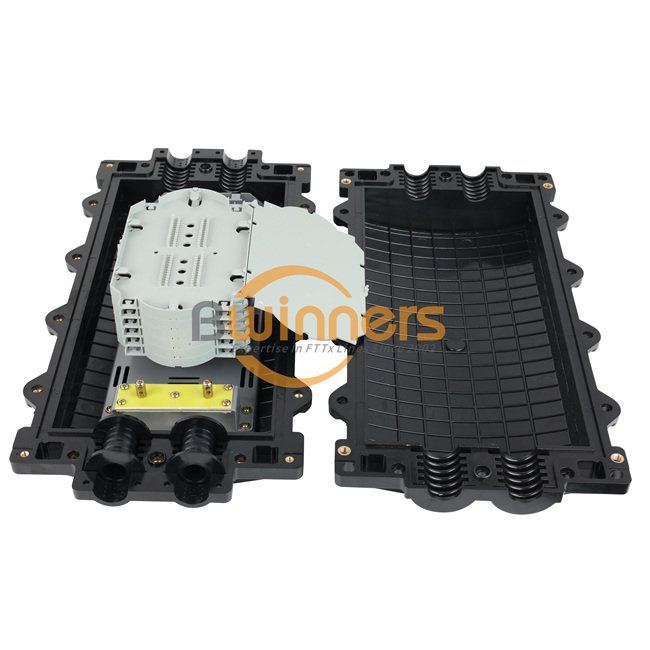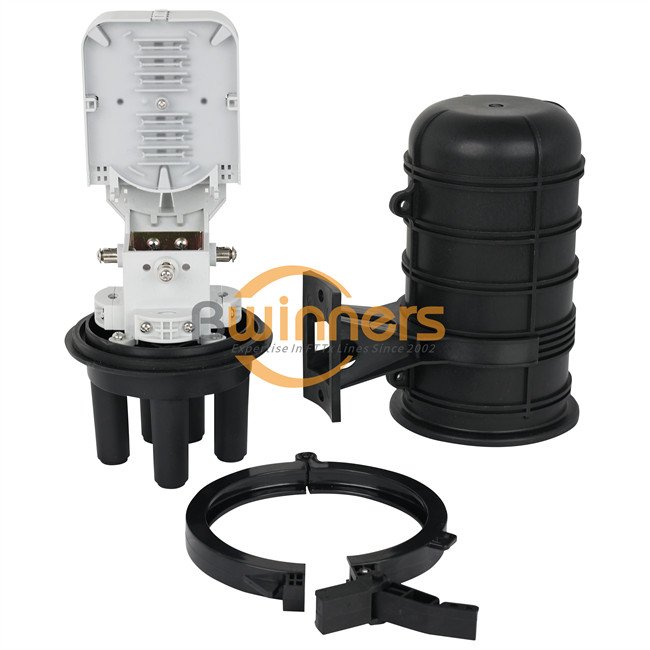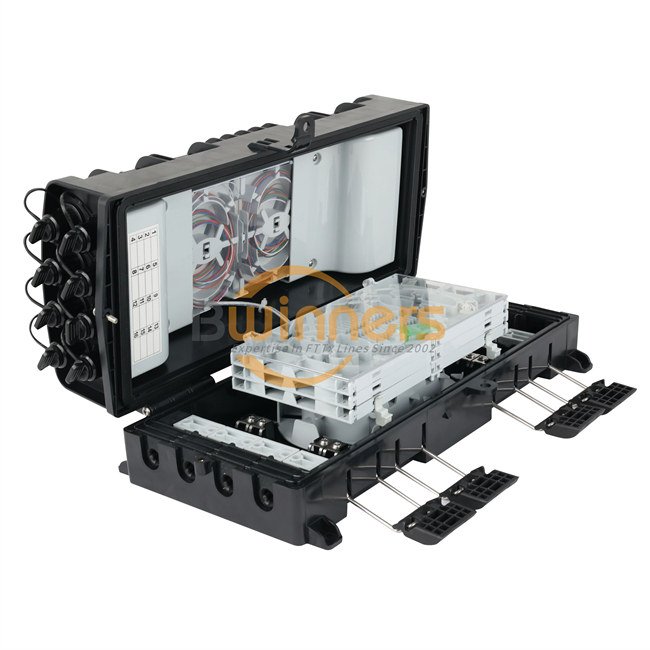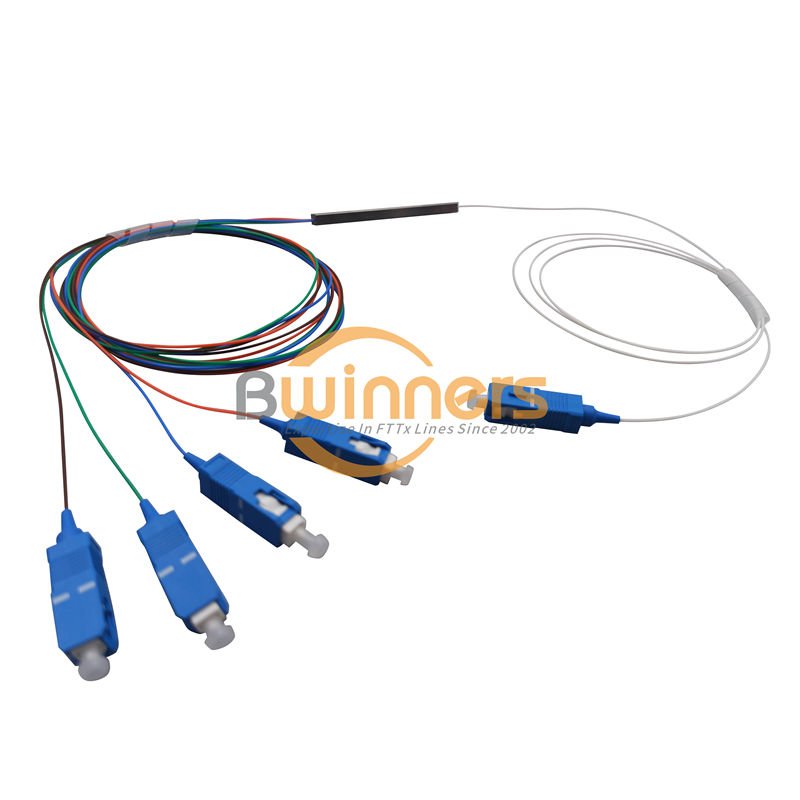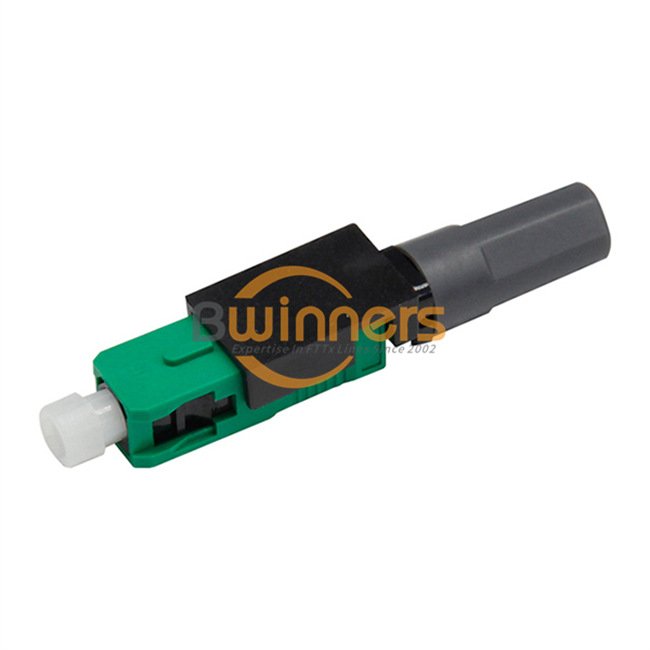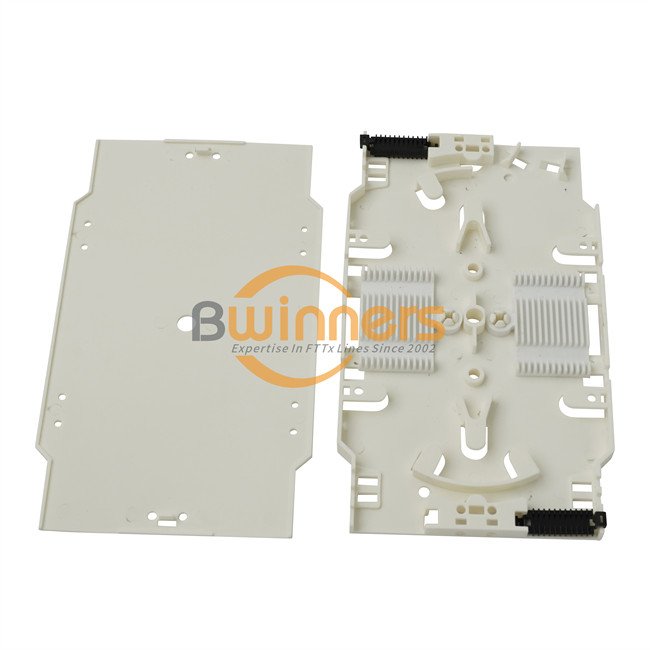Fiber Optic Joint Closure 6 Ports Up To 96 Cores Model:GJS-ST24
GJS-ST24Horizontal type Fiber Optic Joint Closure with 3 inlets/outlets Up to 96 Cores. In-line (Horizontal) Fiber Optic Joint Closure are designed to provide space and protection for the fiber optic cable splices. In-line (Horizontal) Fiber optic Joint closure with the perfect and reliable sealed design which provides excellent protection grade, while protecting splices during pulling, compressing, and impacting, bending, tension, axial tension.
- Model: GJS-ST24
- Dimension: 440X220X11mm
- Max Capacity: 96 Cores (4 X 24 splice tray)
- Cable Hole: 3 In 3 Out, 6 Ports
- Cable Diameter: Φ7.0-Φ30.0mm
- Sealing Structure: Sticky cincture
- Material: PC, PP, ABS
- Installation: Aerial, Duct, and Direct buried
- IP Grade: 68
- Specification
- Description
- Inquiry
| Name | Fiber Optic Splice Closure |
| Model | GJS-ST24 |
| Size | 440X220X110mm |
| Cable Hole | 3 In 3 Out, 6 ports |
| Sealing Structure | Sticky cincture |
| Material | PC, PP |
| Max Capacity | 96 Cores, 4 x 24F Tray |
| Cable Diameter | For Φ7~Φ30mm |
| Installation | Aerial, Pipeline, Direct-bury, Wall mount |
| Protection Grade | IP67 |
基于“增大化现实”技术的水平(内联)光纤接头闭包e used for the protective connection of two or multiple optical cables and optic fiber distribution. It is one of the commonly used equipments of the user access point. It is used for the outdoor connection between optical distribution cable and optical in room cable. Available for aerial, duct, direct buried application.
Features
1.Horizontal / Inline type, 3 in 3 out, a total of 6 ports, suitable for 7~30mm cable.
2.Max capacity up to 96cores, with 4 X 24F trays.
3. GJS-ST24 Fiber Optic Splice Closure main body uses the mechanical seal, which is suitable for the Aerial and Pipeline installation.
4.关闭的身体是designed with buckles around it, which can be opened and used repeatedly without screws, simple in structure and easy in operation.
5. Endure harsh conditions such as vibration, impact, tensile cable distortion, and strong temperature changes.
6.High-strength engineering plastic shell.
7.It does not require special tools, easy to install, and open the duplicate.
Application
CATV system
Optical fiber communication
以前
Fiber optic network convergence
Optical fiber access network
FiberOpticSpliceClosure
Thefiber optic splice closureis common hardware used in the network system. It can mainly be found on the ends of the optical fiber and is used to connect the optical fibers.
It can also be used to protect and organizeoptical fiber cablesfrom unnecessary damage.
FiberOpticSpliceClosureMaterial
The fiber optic splice closure is made of metal and ABS/PC/PP plastic, which are not easy to rust and have good thermal stability. The metal has good rigidity and strength, while the plastic has low cost, high intensity, light weight and beautiful appearance. The metal part is usually made of aluminum alloy or stainless steel, while the plastic part is made of engineering plastics such as polypropylene or polyethylene terephthalate (PET).
The choice of Fiber Optic Splice Closure Material can make all the difference between your project being a success or a failure. Thesplice enclosuresyou use should fit within the manholes or pull boxes specified on your project plan. Additionally, the fiber optic splice closures should be labeled per your Project Detail Sheet. Once you’ve selected the type of closure you need, you should install the cables into the enclosure.
FiberOpticSpliceClosureTypes
There are two types of splice closures: vertical and horizontal.Vertical fiber optic splice closuresare made to withstand outside weather conditions. Outdoor splicing needs high-level seals and waterproof technology. Fiber Optic Splice Closures can accommodate anywhere from a few fibers to 288 fibers. They’re compact and durable, providing maximum protection and are particularly useful for harsh outdoor environments.
Another type of fiber optic splice closure is the vertical one. These are known as fiber dome and are similar to the horizontal types. Thevertical closureis designed for buried applications and is made of high-quality engineering plastics. The vertical type features one, two, or three inlet/outlet ports. Vertical fiber optic splice closures are typically used for CATV, telecommunications, and fiber optic networks.
The vertical closure, which looks like a dome. These are often used for buryingfiber optic cablesin a variety of applications, such as in an aerial FTTH “tap” location. While these closures are ideal for buried applications, they are also suitable for above-ground installation as well. The closure’s cable entrance capacity should match the network’s capacity and the number of cables that are employed in the network.
FiberOpticSpliceClosureStructure
The basic design of most closures involves two main parts: a base or bottom piece, which is attached to a flat surface; and a dome-shaped lid that snaps over the base part.
Bwinners fiber optic splice closure has three parts: the shell, the dustproof cap and dustproof cover. The shell is made of metal or plastic, which is sealed with a rubber ring to prevent dust from entering. The dustproof cap is made of plastic or metal, which can be used for sealing and dust proofing. The dustproof cover can be opened for inspection and maintenance; it can also be closed tightly to prevent dust from entering when not in use.
FiberOpticSpliceClosureFunction
Fiber optic splice closures offer a lot of benefits, which makes them very popular among people.
It protects fiber cables from heat, moisture, corrosion and other external elements.
FiberOpticSpliceClosureApplication
Vertical fiber optic splice closures come in a variety of configurations, with different inlet and outlet ports. High-capacity models are available for larger networks, and the number of splicing trays can vary. A dome-type fiber optic splice closure must have waterproof technology and a high-level seal to protect the cables from insects. An underground fiber optic splice closure must also keep dirt out.
Horizontal fiber optic splice closuresare cylindrical or flat, and they meet the same specifications as their horizontal counterparts. They’re usually used in underground or aerial applications. Horizontal fiber optic splice closures are designed to withstand temperature ranges from -40degC to 85degC. A vertical fiber optic splice closure, on the other hand, resembles a dome. Both of these closures serve the same function, but they’re generally used for buried applications.
The port count in a fiber optic splice closure is a measure of its ability to accommodate multiple types of cables. The number of ports in a closure is important because it indicates how many cables are in the network. The number of ports in a closure will depend on how many cables you need to terminate. Smaller ports are used for drop cables and branch cables, and larger ports are for large cables.











